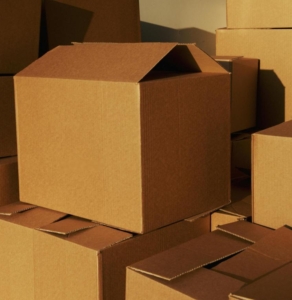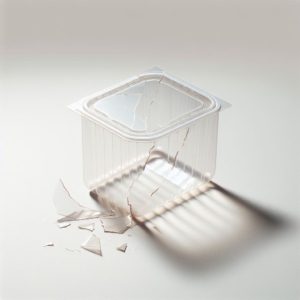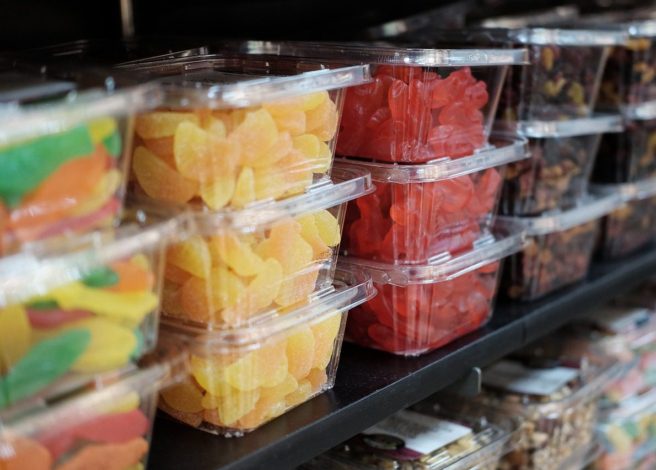A cracked container. A damaged product. A stack of packages holding food has fallen off a shelf and spilled all over a customer. What do these horrifying scenarios have in common? A minor detail that food businesses overlooked and now it is too late. The thickness of plastic packaging, or “gauge,” is a key business choice. It affects product protection, profits, and customer satisfaction.
So, are you choosing the right packaging? Are your packages failing before it reaches the consumer? If so, it might be a question of gauge.
This article will tell you what you need to know about the gauge of plastic packaging for your food business. This way, you can prevent waste and food-packaging-based disasters so your customers remain happy (and clean!).
The Importance of The Right Gauge
 Plastic gauge is key to packaging performance. For PET (polyethylene terephthalate — can you see why we use the acronym PET?) packaging, the industry standard is often related to “mil.” One mil is equal to 1/1,000th of an inch. A great example is the size of a human hair, which is approximately 2-3 mils.
Plastic gauge is key to packaging performance. For PET (polyethylene terephthalate — can you see why we use the acronym PET?) packaging, the industry standard is often related to “mil.” One mil is equal to 1/1,000th of an inch. A great example is the size of a human hair, which is approximately 2-3 mils.
The wrong gauge can harm your product and brand reputation.
For businesses operating in multiple regions, the right gauge selection is critical. This is especially true when shipping across long distances. Cross-country transport, storage, and handling vary. They all affect your packaging’s performance. Poor packaging choices can lead to product damage during transit, causing returns and disappointment among customers and consumers.
The Real Cost of Cutting Corners
Every packaging decision tells a story of trade-offs. Like any good story, the plot twists aren’t always apparent from the first page. Thinner (or “lighter”) gauges bring attractive cost savings and environmental benefits to the table, while thicker (or “heavier”) gauges offer enhanced durability that can result in longer shelf life.
But here’s what some business owners realize too late: the true cost of packaging. It doesn’t show up on the invoice, but in the real-world performance of the product. And unlike fine wine, these surprises only get worse over time.
 Consider the journey your product takes: Packed tight in boxes, stacked high on pallets, playing an unwilling participant in America’s pothole-dodging championships, and finally displayed in stores. Each step presents a moment of truth for your packaging choice. A gauge size that doesn’t meet real-world demands can ruin a product. It can turn it into a logistics nightmare faster than you can say, “customer complaint form.” If you’re not prepacking and shipping, imagine the dangers of a poor packaging choice in store? Thin containers could tumble when stacked on top of one another, not having the strength to withstand the weight. Product could spill, turning into waste.
Consider the journey your product takes: Packed tight in boxes, stacked high on pallets, playing an unwilling participant in America’s pothole-dodging championships, and finally displayed in stores. Each step presents a moment of truth for your packaging choice. A gauge size that doesn’t meet real-world demands can ruin a product. It can turn it into a logistics nightmare faster than you can say, “customer complaint form.” If you’re not prepacking and shipping, imagine the dangers of a poor packaging choice in store? Thin containers could tumble when stacked on top of one another, not having the strength to withstand the weight. Product could spill, turning into waste.
Behind the scenes, gauge selection choreographs a complex manufacturing dance. Thicker materials aren’t known for their quickstep. They demand their own rhythm: longer processing times, precise temperature control, and delicate handling. The key isn’t to default to the thinnest or thickest option. Success comes from finding that sweet spot where your packaging performs perfectly for your specific application. The right gauge protects your products and profits from the production line to the store shelf.
Selecting the Right Gauge
Choosing the right plastic packaging thickness starts with understanding your product’s physical demands. Your distribution chain matters, too. Cross-country shipping needs more durability than local delivery. Stacked, heavy items and tall containers need more support. Also, temperature changes in transit can impact packaging.
 High-quality manufacturers don’t leave this to chance. They put packaging through a gauntlet of tests that would impress a military strategist. These include lab trials, shake-rattle-and-roll simulations on vibration tables, and real-world route tests. This thorough vetting process catches potential headaches before they turn into full-blown migraines.
High-quality manufacturers don’t leave this to chance. They put packaging through a gauntlet of tests that would impress a military strategist. These include lab trials, shake-rattle-and-roll simulations on vibration tables, and real-world route tests. This thorough vetting process catches potential headaches before they turn into full-blown migraines.
Keep your eyes peeled for trouble signals, and they’re usually not subtle. If your products are collapsing during shipping or generating multiple breakage reports, it’s time to revisit your packaging choice. Work with manufacturers and get samples that you can test. If you nail it, your bottom line will thank you. You’ll have fewer damages, happier customers, and higher profits.
Making Informed Decisions with Gauge in Mind
Food business owners who know requirements for plastic packaging thickness can make better purchasing decisions. Exploring your options and testing your products with different gauge ranges is key. This knowledge empowers you to make well-informed decisions and choose the optimal packaging. Successful businesses don’t just focus on unit cost. They consider how their packaging choices affect operations, quality, and customers. This approach often shows that higher packaging costs can save money. It does so by reducing damage, returns, and complaints. Spending more on the right packaging today saves you from recouping the loss of failed (cheaper) containers tomorrow.
When choosing packaging, consider the product’s weight and how it will be distributed. Also, check the storage conditions and the product’s requirements. Obtain samples and test for application, shipping (if needed), presentation, visibility, and stackability. These elements all influence the optimal gauge selection for your specific requirements. High-quality packaging manufacturers can help find the right balance. They will make sure your packaging works as needed.
Are You Feeling En-Gauged?
 Your packaging is your product’s first line of defense and your brand’s silent ambassador. The beauty of perfect gauge selection is that nobody notices it. No customer ever called to rave about how their container didn’t collapse in transit. But they’ll certainly remember when it does. It works like a good referee in a sports game: doing its job so well you forget it’s there.
Your packaging is your product’s first line of defense and your brand’s silent ambassador. The beauty of perfect gauge selection is that nobody notices it. No customer ever called to rave about how their container didn’t collapse in transit. But they’ll certainly remember when it does. It works like a good referee in a sports game: doing its job so well you forget it’s there.
So, next time you check that packaging quote, remember this: skimping on gauge to save money could end up costing you more and harming your reputation with each delivery.
Are you looking to learn more about how you can make smart purchasing decisions with your plastic food packaging? Visit our Learning Center today and contact us with any questions.


